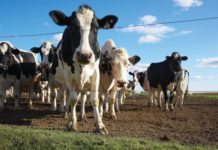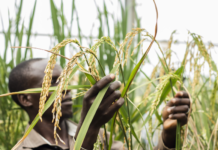The dairy industry in North America is embracing a digital revolution, with milking robots playing a central role in reshaping traditional farming methods. As technology advances, farmers are turning to automated milking systems to overcome labor shortages, boost productivity, and improve animal welfare. According to insights from Persistence Market Research, the North American milking robots market is witnessing steady growth driven by these very factors. The integration of robotics into dairy farming operations is not just a trend—it is becoming a necessity for farms aiming to remain competitive and efficient in an evolving agricultural landscape.
Digital Transformation in the Dairy Sector
Across North America, dairy farmers are actively exploring the potential of robotic milking systems, also referred to as automatic milking systems (AMS). These robots eliminate the need for manual milking and operate independently, allowing cows to be milked multiple times a day based on their natural rhythms. The adoption of such systems is no longer limited to large commercial farms. Increasingly, small and mid-sized farms are recognizing the advantages of North America Milking Robots and are gradually making the shift towards automation. According to Persistence Market Research, this technological transition is being fueled by rising labor costs, changing consumer expectations, and the broader movement toward precision agriculture.
Addressing Labor Shortages Through Automation
One of the most pressing challenges facing the North American dairy industry is the shortage of skilled labor. Milking cows manually is labor-intensive, repetitive, and often performed under difficult conditions. As it becomes harder to find dependable labor, dairy farmers are seeking reliable alternatives. Robotic milking systems offer a solution by automating the process, reducing dependency on manual labor, and ensuring that cows are milked consistently and hygienically. This consistency directly contributes to better milk yield and quality. Additionally, farmers can redirect their focus from repetitive tasks to more value-added activities such as herd management and animal health monitoring.
Efficiency Gains and Operational Advantages
The implementation of milking robots brings a significant boost to farm efficiency. Unlike traditional milking setups that follow strict schedules, robotic systems allow cows to enter the milking unit voluntarily whenever they feel the need to be milked. This freedom leads to reduced stress and often results in increased milk production. Furthermore, robots monitor every aspect of the milking process, from udder cleanliness to milk flow rates, ensuring a level of precision that is difficult to achieve manually. The result is high-quality milk with fewer contaminants and reduced risk of mastitis and other infections.
Persistence Market Research notes that many dairy operations using milking robots experience not only productivity gains but also improved herd health. Data collected by these systems offers valuable insights into each cow’s condition, feeding patterns, and health anomalies. Early detection of issues such as lameness, illness, or reduced milk output allows farmers to take proactive measures, reducing veterinary costs and minimizing losses.
Enhancing Animal Welfare and Comfort
Animal welfare is an increasingly important consideration for both farmers and consumers. Robotic milking systems offer cows the ability to choose their own milking times, which aligns with their natural behavior and reduces anxiety. Cows that are more comfortable tend to be more productive, and this is evident in farms that have adopted AMS. Moreover, the gentle and consistent milking process facilitated by robots is less stressful on the animals and can extend their productive lifespan.
By minimizing unnecessary human contact and allowing the cows to follow their natural instincts, robotic milking systems contribute significantly to a healthier, more humane dairy environment. Persistence Market Research has highlighted that such improvements in animal comfort and health play a role in improving brand perception, especially among consumers concerned with ethical sourcing and animal welfare.
Initial Costs and Integration Challenges
While the benefits of milking robots are clear, the initial investment remains a major barrier for many farmers. A full robotic system can cost hundreds of thousands of dollars depending on the scale of the operation and the brand of equipment used. This upfront cost can deter small farmers, although financing options and government support programs are helping to reduce the burden. The integration of milking robots also requires changes in infrastructure, such as redesigning barns, implementing data systems, and training staff to manage the new technology.
Another factor that complicates adoption is the technological learning curve. Farmers must adapt to a new way of working, often relying on software and sensor data for decision-making. However, Persistence Market Research suggests that as technology becomes more user-friendly and as success stories spread, these adoption hurdles are gradually diminishing across North America.
Connected Technologies and Data-Driven Insights
The impact of milking robots extends beyond the milking process itself. Modern robotic systems are part of an interconnected ecosystem that includes herd management software, automated feeding systems, and real-time health monitoring tools. These components work together to optimize the productivity of dairy operations through data-driven decision-making.
Advanced analytics tools can analyze trends in milk yield, identify underperforming cows, and suggest dietary or medical interventions. These insights enable farmers to make informed choices that enhance productivity while ensuring the health and well-being of their herds. As noted by Persistence Market Research, farms that fully integrate robotics and data systems experience higher operational efficiency, better product quality, and more sustainable practices.
Sustainability and Environmental Impact
Sustainability is a growing concern for both producers and consumers, and milking robots are contributing to greener farming practices. These systems are designed to optimize the use of water, feed, and energy, thereby reducing waste and minimizing the farm’s environmental footprint. For example, the ability to monitor individual cow health leads to targeted treatments, which can reduce the use of antibiotics and improve overall herd immunity.
Robotic systems also promote cleaner barns and improved manure management, which are essential for environmental compliance and long-term sustainability. As consumer demand for sustainably produced dairy products grows, farms equipped with robotic systems are better positioned to meet these expectations and maintain a competitive edge.
Future Outlook for Robotic Milking in North America
The future of milking robots in North America is bright. With ongoing innovation, declining technology costs, and increasing awareness of the benefits, adoption is expected to rise steadily. Milking robots will become more sophisticated, offering enhanced features like artificial intelligence, machine learning algorithms, and even better integration with other smart farming tools.
As more dairy farms experience the long-term economic and productivity gains, industry momentum will continue. Supported by trends outlined in reports from Persistence Market Research, the North American milking robots market is projected to expand significantly over the coming years, driven by both necessity and opportunity.
Milking robots are redefining dairy farming in North America. From addressing labor shortages to improving animal health and enabling sustainable practices, these machines are making a profound impact on the industry. Although challenges remain in terms of cost and integration, the long-term advantages are clear. As noted by Persistence Market Research, this technological transformation is not just about modernization—it’s about shaping the future of dairy farming for greater resilience, profitability, and environmental responsibility.








